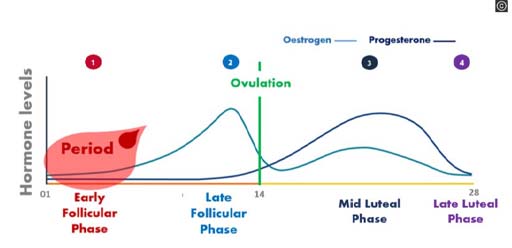6 How can hormones be used to a female athlete’s advantage in exercise?
Activity 6 Using hormones to influence training effects
Listen to the audio below where Simon Rea explains the fluctuations in oestrogen and progesterone (as outlined in Figure 1) and their impact on training. Then answer the following question:
- What are the key implications for coaches, trainers and athletes?
Transcript
Discussion
Understanding the impact of the two hormones is so important when working with women who exercise as it might inform the type of training that is planned, the duration of recovery, or the fuelling requirements around a training session. The coach or trainer needs to be adaptable to consider the potential fluctuation in energy levels and mood of the individual athlete. While research is still in its early stages it is suggesting that athletes should take advantage of the early phase, once menstrual bleeding has stopped, to plan the more intense endurance and strength training sessions that they will do. However, soon after the midpoint of the cycle intensity may need to be reduced with a focus on rest and recovery.
It must be said again that these are ‘typical’ responses and not all females will experience these variations during their cycle. Some women may not even notice symptoms or need to tailor their training to their cycle.

